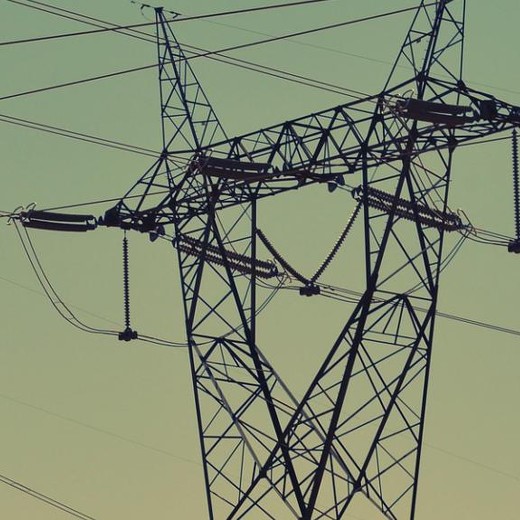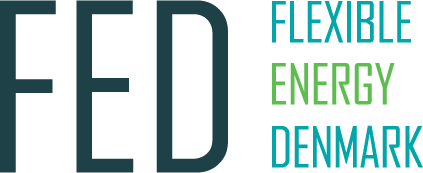Published 10. Dec. 2019
FED's Living Labs with electric cars, airconditioning systems and district heating

Data from real-life contexts will lead to solutions and tools that can equalize power consumption across 24 hours, preventing Denmark from spending millions of kroner on an expansion of the electricity grid due to the green transition.
Under the green transition, the aim is to get much, much more sustainable energy into the electricity grid to turn the energy supply electric rather than based on fossil fuels.
In FED, we aim to utilize energy data to find methods for the future distribution of the Danish electricity consumption.
The challenge is that electricity production will be much more unstable once the power grid is based on sustainable energy that fluctuates according to how the wind blows and the sun shines. At the same time, the Danish power consumption will increase markedly due to the charging of electric vehicles, the use of heat pumps in district heating and electrically powered systems for things like remote cooling.
A prognosis has shown that the Danish power grid would need to be expanded for as much as DKK 19 billion over the next 10 years due to the green transition.
Through FED, we want to show that if we think smart and distribute the power consumption across 24 hours, we will only need an expansion to the value of DKK 3 billion, according to a prognosis from Danish Energy.
As such, we use so-called living labs to investigate relevant problems regarding power consumption.

Living Labs
A living lab is a physically/geographically bounded area that functions as a real-world laboratory. We gather energy data from the area, analyze it and use the resulting knowledge for developing digital or physical products that may help controlling our electricity consumption.
From the beginning, we have defined seven living labs.
At TREFOR's living lab in the Triangle Area, we look into how we can reduce the load from charging electric vehicles. In Høje-Taastrup Municipality's living lab, we test control systems for airconditioning systems in the municipality's buildings. In NOVASOL's living lab in Blåvand in Western Jutland, we work with intelligent control of heating swimming pools. In Aalborg, we control the district heating in private homes.
If we single out electric vehicles, the expectation is that in 2030, there will be one million electric vehicles in Denmark of a total fleet of cars numbering around 2.5 million. The charging of so many electric vehicles would not be possible with our current power grid. In addition to this, we will also see increased numbers of heat pumps etc.
- We could expand the pwer grid, but that would cost billions of kroner. If on the other hand we get better at controlling the consumption, we can utilize the flexibility of the electricity production and move parts of the consumption to points in time when there is a lot of wind-turbine-generated power in the grid, says chief consultant at TREFOR Infrastructure in Kolding, Tommy Lykkegaard, who is project manager of FED's living labs.
- We could for instance charge electric vehicles at night when the general power consumption is much lower than between 5PM and 8PM when many families use extra power. In living labs, we will test these ideas in practice.
Energy data gathered in data lake at Center Denmark
Through sensors and other technical equipment, our living labs will gather energy data and send them to a so-called data lake at Center Denmark, which will contain an enormous amount of data.
Our researchers at the universities can extract large amounts of data from the data lake in real time around the clock and analyze them with algorithms and identify patterns for how we might distribute our power consumption across the day and night.
This knowledge can be used by our industrial partners, and eventually we will have a digital tool in the shape of a control product such as a data programme or physical product that might be sold commercially.
As mentioned, our living labs cover different scenarios. In the Triangle Area, TREFOR will start with a focus on electrical vehicles. A report from DTU and the Danish Electrical Vehicle Alliance (a trade assosiation under Danish Energy) has estmated the need for putting up somewhere between 25,000 and 30,000 chargers in semi-public and public spaces. That is way more than today.
- In just a few years we will see an incredible number of electric vehicles, and we know that will overload our power grid to the extreme unless we expand the grid for billions or move the power consumption. In our part of the grid, we would have to double our electricity suppy in 2030 due to electrical vehicles, so we have to try different things. We want to find out how we can make people change their behaviour with regards to charging their electric vehicles, says Tommy Lykkegaard.
At TREFOR, they expect to make do with an expansion to the value of DKK 150 million rather than having to invest DKK one billion, if the consumers will change their habits.
Tommy Lykkegaard points to similar issues at district heating companies, who will need to use electricity in the future, and where this will also influence the power grid. Already today, district hearting companies (both for house heating and hot water) experience a significant load at some times of day.
In FED's living lab in private homes in Aalborg, we therefore try controlling the energy consumption through measuring and regulation. District-heating data can be translated into power data if heat pumps are used; which is already the case in some places.
As soon as 2020, the FED partners will be able to see whether they will be missing certain types of data and will need more living labs to get hold of these. This could be data from heat pumps, energy data from street lights or something else entirely.
Facts on living labs
A living lab is a geographical area that is experiencing a challenge that the FED project might investigate.
FED’s living labs gather data on building structures, constructional systems (CTS and others) and operational systems.
Living labs send data from various sensors and monitoring systems into the data lake at Center Denmark. Some living labs have been equipped with extra sensor systems and actuators for control.
The living labs are managed by a number of supply companies, Høje-Taastrup Municipality and the vacation-house rental company NOVASOL.
All energy data will be made anonymouse to the companies so they cannot identify who have provided the data. But we can use the data for analyzing and developing solutions for flexible electricity consumption.
Denmark will go through a significant green transition in the next few years. The aim is that by 2030, Denmark will have reduced its CO2 emissions with 70 percent compared to 1990.
